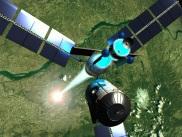I want to make a 3D simulation game where you operate a robot to do basic construction tasks, like stacking bricks or welding.
The only catch is that the robot is on the Moon, and you are on Earth, so there must be a 2.6 second time lag in all of your controls, to simulate the Earth-Moon signal delay. (That is the challenge!)
The game should be open source and able to build/run on Windows and Linux.
I have done a lot of programming with C++, graphics, geometry, OpenGL etc. but have no experience making games or simulations.
Would anyone here recommend the first steps? What are good physics/graphics libraries to build on top of? Go with C++ or another language? Is the signal delay a big deal or no problem?
Even better, is there an existing open source simulation that I can simply modify? Or has this already 100% been done and all I need to do is download it and play it?
Not looking to make money, just want to create an experience of remote control construction on the Moon that everyone can try.
Thanks!







